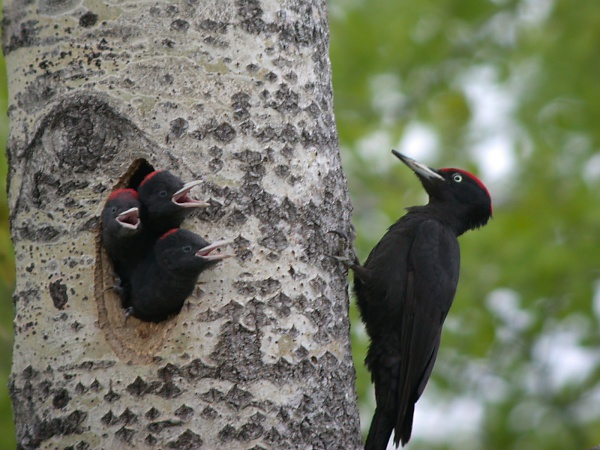Facts About Black woodpecker
The black woodpecker is an intriguing bird that inhabits the mature forests of the northern Palearctic region. Unlike many birds, it is non-migratory, residing year-round in its lush, wooded habitats. This woodpecker is the sole representative of its genus in this area and shares a close relationship with North America's pileated woodpecker. With two recognized subspecies, it was originally described by Carl Linnaeus in 1758 and currently belongs to the genus Dryocopus. One of its most striking features is its entirely black plumage, accentuated by a vibrant red crown, along with its distinctive calls.
Being the largest woodpecker within its range, the black woodpecker can be found from Europe to parts of Asia and the Middle East. It thrives in mature woodlands, adapting to various forest types across different elevations. Its diet predominantly consists of carpenter ants and wood-boring beetle larvae, which it adeptly extracts from trees using its powerful bill. By nesting in tree cavities, the black woodpecker plays a crucial role in the ecosystem. It helps control wood-boring insect populations and provides habitats for other creatures, establishing its status as a keystone species.
In terms of rearing their young, black woodpecker pairs collaborate, sharing responsibilities such as incubating eggs and feeding their chicks. However, they face challenges such as habitat loss, predation, and human disturbances. Thankfully, conservation efforts, including forest restoration, have bolstered their populations in some regions. Predators of the black woodpecker include the pine marten and certain birds of prey.

 Armenia
Armenia